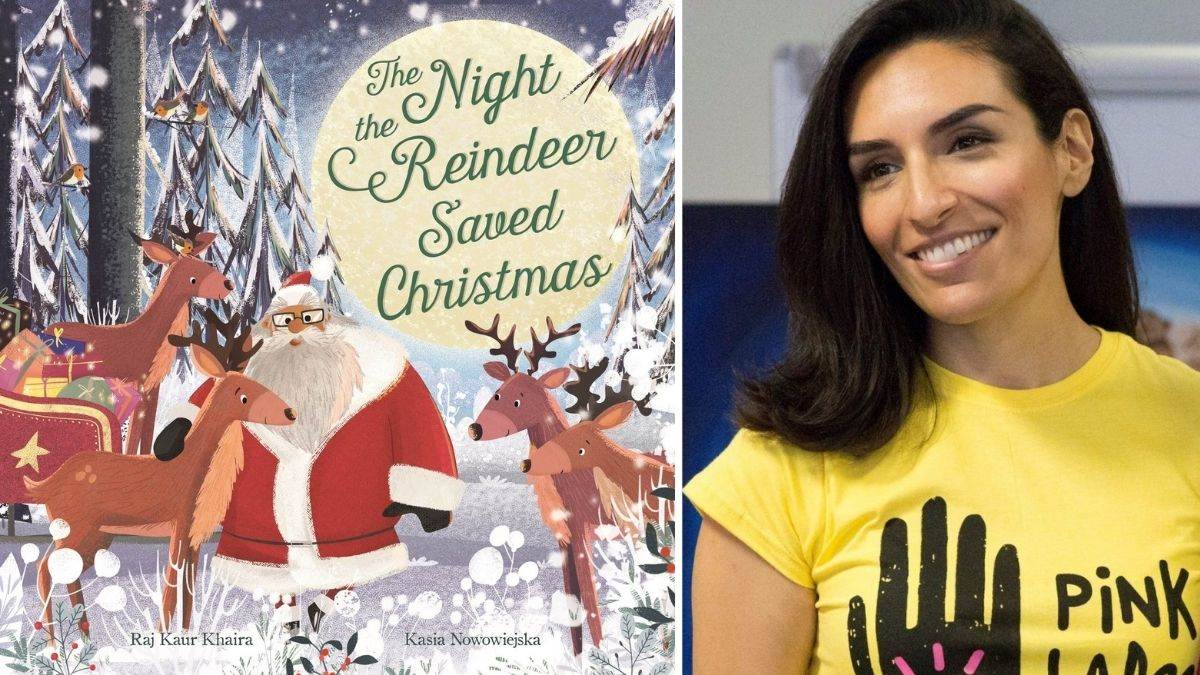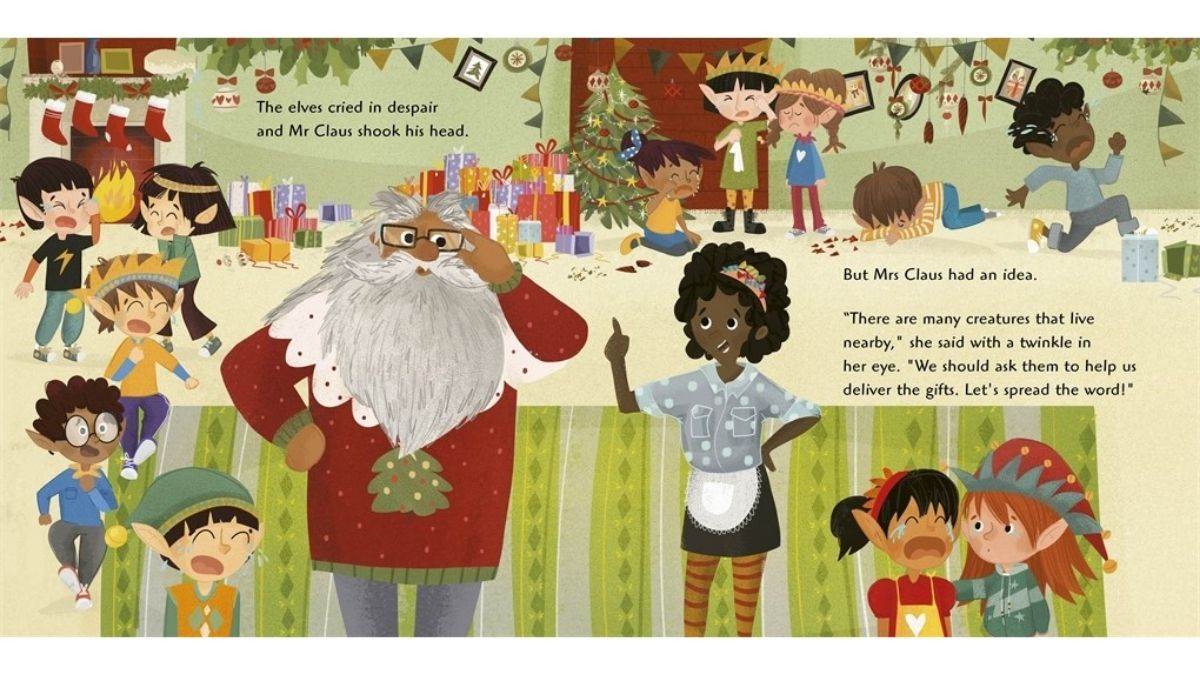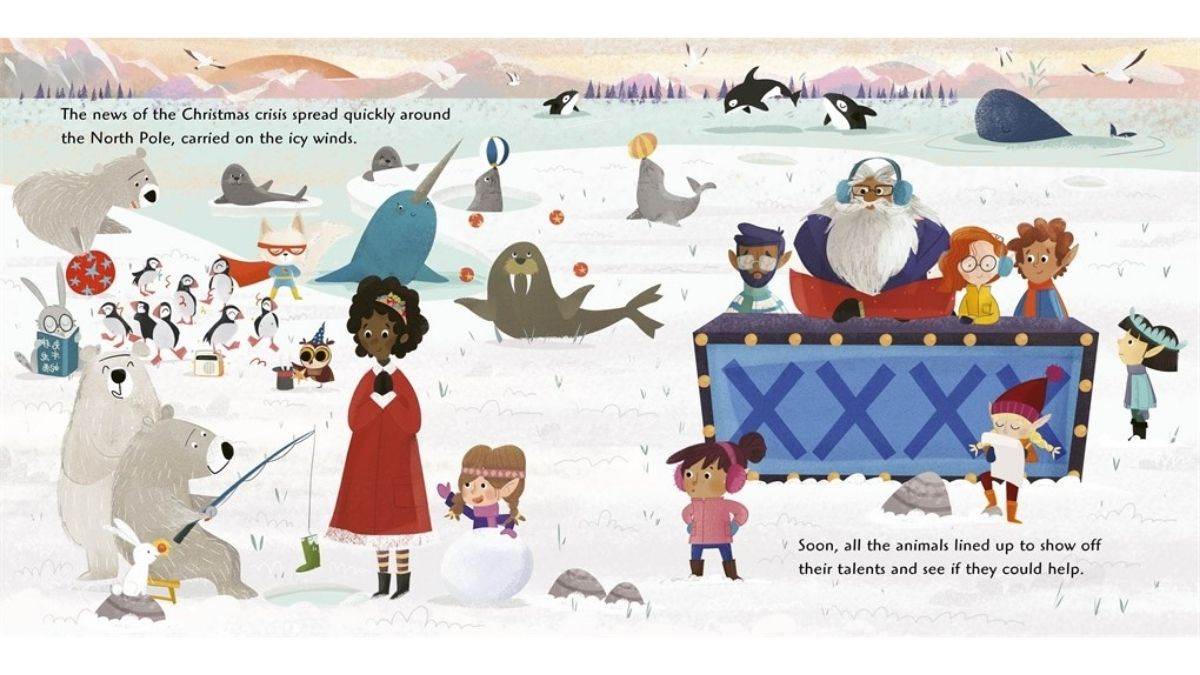Why diversity matters at Christmas
Published on: 03 December 2020 Author: Raj Kaur Khaira
People from all over the world celebrate Christmas - so why don't we see more diversity in books about the festive season?
Raj Kaur Khaira, author of The Night the Reindeer Saved Christmas, explains the importance of representation when it comes to children's Christmas books.

Representation matters
You might wonder why ‘diversity’ matters in Christmas books; why it is important to have characters that aren’t white in children's books about Christmas. Perhaps somewhere in the back of your mind you might think that Christmas is a Christian celebration, and that Christians are mainly white people, and so making a fuss about Black or Asian characters in Christmas books seems a bit unnecessary. You wouldn’t be alone in thinking a lot of those things. I thought this once too. And then I realised how wrong I was.
It is not the case that Christians are mainly white people, but despite this there is still an incredible lack of characters that are not white in Christmas books.
Two new reports this week revealed that the number of children’s books featuring a Black, Asian or ethnic minority character is 10%, up from 7% in 2018.
Even though the overall numbers are still very low, it is a promising trend. But despite this, a tiny amount of children’s books feature a Black, Asian or ethnic minority main character - only 5% (up from 4% in 2018). It is perhaps this latter statistic that sticks with me the most; highlighting a notable element of my lived experience: diversity is okay, so long as it’s not a priority, and as long as it never actually achieves true representation.
80% of Christians are not white, after all. Yet despite the facts, publishers, authors and children’s illustrators often don't accurately reflect the ethnic makeup of the world and of Christians specifically. This is perhaps one of the many reasons why young children struggle to imagine figures other than cis-white men in positions of a power and as examples of success. We know representation matters.
Christmas was for white people
Darren Chetty’s essay 'You Can't Do That! Stories Have To Be About White People' was first published in 2013, and it describes a young Black boy proclaiming that 'You can’t do that!’ when his classmate writes a story with a Black main character, because ‘Stories have to be about white people.' It is as relevant today as it was when he first wrote it. A young child saying something like this in a classroom is a direct result of the lack of diversity in children’s books.
I’ve seen this play out in my own life. In many ways I had a quintessentially British childhood. I was born into a working-class family, raised in the heart of the West Midlands, attended state schools, consumed a healthy amount of television and read the books I had to read for school.
A lot of what I came to believe about myself and the world around me came from the media I consumed and the things I was exposed to at school.
Christmas was no different. Festive imagery when I was growing up was dominated by white (predominantly blonde) families enjoying the festive period. Santa was white, so was his wife and all his elves. It was pretty clear: Christmas was for white people.

Illustration by Kasia Nowowiejska
The story of Jesus
I distinctly recall the moment I learned that there are more Christians in India than there are Sikhs in the entire world, that there are more Christians in China than there are people in Britain. To say I was shocked would be an understatement.
The only thing that topped the shock I felt when I learned that Christianity wasn’t just for white people was how stunned I felt when I realised that Jesus himself wasn’t white. That Jesus was born in Bethlehem, which today sits in the illegally occupied West Bank, and was thus a brown skinned Middle Easterner, had never even occurred to me, despite the fact that I’d heard the story of his life more times than I could count. I suppose I’d always just assumed Bethlehem was somewhere in Europe and as a child, never bothered to whip out a map and check for myself. Why would I? I was a kid and trusted that my teachers were giving me the full picture. I learned later just how wrong I was.
I’m not alone either. Many of my Black and Asian friends have said they thought the same - sometimes well into adulthood.
Sadly, not much has changed. Christmas advertising, like most things in Britain, still centres white people.
Churches around the world still depict Jesus and other important Christian figures from the same period as white men and women. Some progress has been made. The #ChristmasSOwhite campaign of 2016 encouraged the advertising industry to sit up and take some responsibility for how they portray the festive period and there have been calls to re-think the constant depiction of Jesus as a white man from many prominent figures including the Archbishop of Canterbury. But until this is actually rectified children will continue to grow up believing that Christianity and Christmas is for and about white people - just like I did.
Diversity is especially important at Christmas
Christianity is the world’s biggest religion. Its impact on everyone everywhere is undeniable. 2020 is, after all, a number on the Gregorian calendar, imposed by Pope Gregory XIII. When you grow up seeing one religion dominate in this way, and seeing that same religion be depicted consistently as by and for white people, it reinforces the message you hear again and again; that white is right and white is best. Learning that Christ himself wasn’t white and that the religion itself isn’t just for white people has the ability to impact someone’s view of the world and how they see their place in it.
Diversity is important all year round, in every element of life, but for all of the above reasons and more, it is especially important at Christmas. So remember, the next time you see a South Asian Santa, or a Black Mrs Claus; this isn’t political correctness, or a publisher trying to appeal to a new audience by being ‘woke’, this is in fact a much more likely representation of the Christmas family than any other.

Illustration by Kasia Nowowiejska
Raj Kaur Khaira is a lawyer, author and activist and now advises start-ups on how they can expand. She is one of few ethnic minority women in the UK to have held a role in the c-suite of a tech start-up.
Raj founded the Pink Ladoo Project in 2015, which encourages South Asian families to abandon the sexist custom of only distributing sweets to their community when a boy is born. The Pink Ladoo Project celebrates the birth of girls with sweets, too. The campaign has attracted tens of thousands of followers in South Asian communities across the UK, Canada, the US and Australia. It has rapidly become one of the most prominent feminist movements for South Asian women.
Follow her on Twitter.




